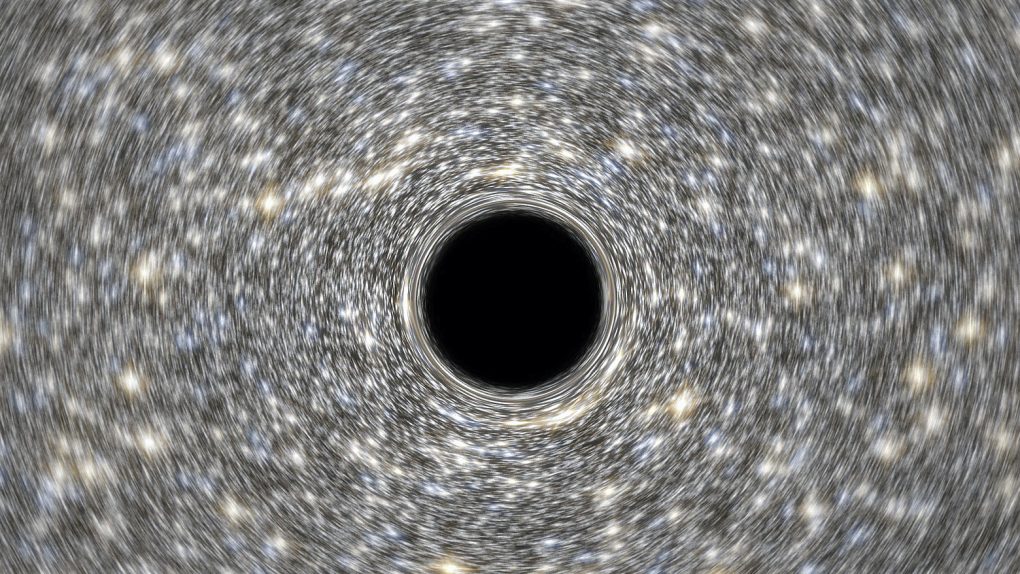- Researchers examined a bright flash they detected at a location thought to be the home of a black hole.
- The scientists provide evidence that the black hole may have collided with another, producing an unexpected flare in space.
- Black holes are typically invisible, swallowing up everything around them, including light.
Black holes in space are difficult to observe. This should come as no surprise since they almost never give off any light of their own, and any light that ventures too close is ultimately swallowed up by the black hole’s intense gravity.
When two black holes merge, you might not expect any light to be produced. However, that may not actually be the case, as new research suggests that the collisions between two large black holes may indeed produce a “flare” that is so incredibly bright it makes our own Sun look like a tiny spark by comparison.
The research, which was published in Physical Review Letters, focuses on some interesting aspects of black hole physics and explains how two impossibly dense objects that gobble up light may produce light of their own when they meet.
The work is based on a very interesting observation made by the Zwicky Transient Facility (ZTF), which spotted a massive flare in space that fizzled so quickly that by the time scientists zeroed in on it, it had already faded from view. The team suggests this may have been the black hole at this location merging with another.
These mergers are known to produce gravitational waves in space but have not traditionally been associated with bright flashes of light. These new observations could change that way of thinking in a big way.
“This supermassive black hole was burbling along for years before this more abrupt flare,” Matthew Graham, lead author of the research, said in a statement. “The flare occurred on the right timescale, and in the right location, to be coincident with the gravitational-wave event. In our study, we conclude that the flare is likely the result of a black hole merger, but we cannot completely rule out other possibilities.”
Via press release:
The scientists attempted to get a more detailed look at the light of the supermassive black hole, called a spectrum, but by the time they looked, the flare had already faded. A spectrum would have offered more support for the idea that the flare came from merging black holes within the disk of the supermassive black hole. However, the researchers say they were able to largely rule out other possible causes for the observed flare, including a supernova or a tidal disruption event, which occurs when a black hole essentially eats a star.
So, did two black holes collide and produce a ridiculously bright flash in space? It’s looking more and more likely, but as with any scientific investigation, more data points are needed to either confirm this phenomenon or determine what else might have produced the light.








